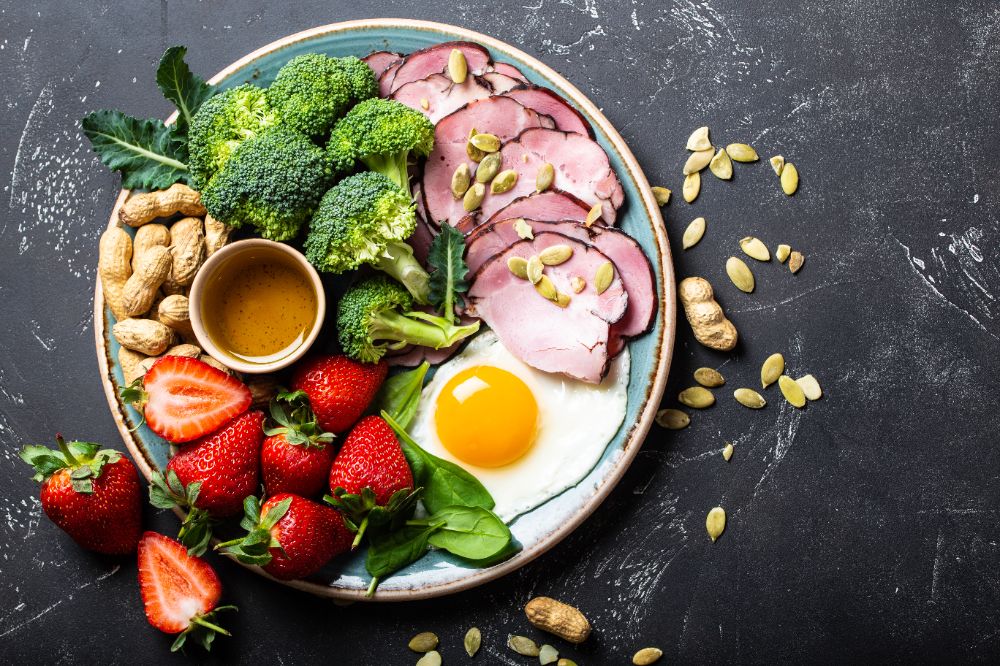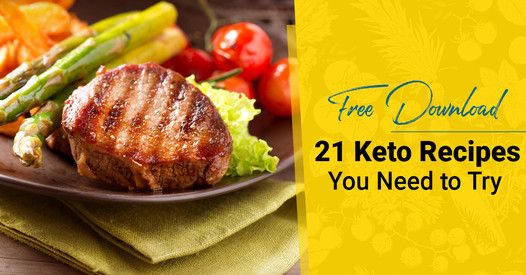A Beginner's Guide to Keto Diet Foods: What to Eat, Beginner List and Foods to Avoid

A Beginner's Guide to Keto Diet Foods: What to Eat, Beginner List and Foods to Avoid
Introduction
Embarking on a journey with the keto diet can be transformative yet daunting for beginners. The ketogenic diet, known for its emphasis on low-carb and high-fat foods, has garnered significant attention for its potential benefits in weight loss and overall health. This guide aims to demystify the keto diet for beginners, providing a comprehensive overview of what to eat, a beginner-friendly keto diet food list, and crucial insights on foods to avoid.
What is the Keto Diet?
The keto diet is a low-carbohydrate, high-fat diet that has been gaining popularity for its potential to promote fat loss and improve certain health conditions. This diet involves drastically reducing carbohydrate intake and replacing it with fat, leading to a metabolic state known as ketosis. When in ketosis, your body becomes incredibly efficient at burning fat for energy.
Principles of the Ketogenic Diet
The ketogenic diet is more than just a trend; it's a lifestyle change. It requires careful planning and an understanding of the foods that are high in fats but low in carbs. The key to a successful keto diet is to keep carb intake low, typically between 20 to 50 grams per day. This shift pushes your body to use fat as its primary energy source, which can lead to weight loss and improved energy levels.
Essential Keto Diet Foods
A fundamental aspect of following a keto diet is knowing the right foods to eat. Here's a beginner's keto diet food list to get you started:
Fats and Oils
Fats will constitute a significant part of your diet on keto, and choosing healthy sources is crucial. Focus on incorporating sources of unsaturated and saturated fats like olive oil, coconut oil, butter, and avocado. Yes, avocado! Rich in monounsaturated fats, avocados are a keto staple, versatile for any meal.
Proteins
Proteins are essential, but it's important to balance your intake as excessive protein can be converted into carbs. Opt for grass-fed meats, poultry, fish, and eggs. These are not only keto-friendly but also rich in nutrients.
Low-Carb Vegetables
Vegetables are vital for their nutrients and fiber content. However, not all veggies are low in carbs. Leafy greens, broccoli, zucchini, and cauliflower are excellent choices. Cauliflower, for instance, is incredibly versatile and can be used as a low-carb substitute for rice or mashed potatoes.
Foods to Avoid on a Keto Diet
Equally important to knowing what to eat is understanding what to avoid on a keto diet. High-carb foods like bread, pasta, sugar, and certain fruits should be limited. Processed foods and sugary beverages are also a no-go as they can disrupt ketosis.
Creating a Balanced Keto Meal Plan
A successful keto journey hinges on a well-thought-out meal plan. Here's how you can create a balanced keto diet meal plan:
Breakfast
Start your day with a meal high in fats and proteins to keep you full and energized. Consider options like eggs cooked in butter or coconut oil, paired with avocado and spinach. These ingredients not only adhere to the keto diet but also provide essential nutrients.
Lunch and Dinner
For lunch and dinner, focus on a good protein source, such as grilled chicken or fish, accompanied by a variety of keto-friendly veggies like cauliflower and zucchini. Don’t shy away from adding healthy fats like olive oil in your salads or cooking.
Snacks
Snacks that are suitable for a keto diet can consist of cheese, nuts, and seeds. These options are rich in fat and low in carbs, making them both satisfying and ideal for quick, on-the-go moments.
Beverages
Water is the ideal choice for a beverage, but you can also enjoy coffee and tea without adding sugar. It's best to steer clear of sugary drinks and high-carb alcoholic beverages.
Beginner Keto Recipes
Keto Breakfast Recipes
-
Avocado and Egg Bake
- Ingredients: 1 large avocado, 2 eggs, salt, pepper, and chives for garnish.
- Instructions: Preheat the oven to 425°F (220°C). Halve the avocado and remove the pit. Scoop out a bit of the flesh to create a larger cavity. Crack an egg into each half, season with salt and pepper, and bake for 15-20 minutes. Garnish with chives before serving.
-
Spinach and Feta Omelette
- Ingredients: 3 eggs, 1 cup fresh spinach, ¼ cup feta cheese, 1 tbsp olive oil, salt, and pepper.
- Instructions: Whisk the eggs in a bowl. Heat olive oil in a pan and sauté spinach until wilted. Pour the eggs over the spinach, sprinkle feta on top, and cook until the eggs are set. Fold the omelette in half and serve.
-
Keto Pancakes
- Ingredients: 1 cup almond flour, 3 eggs, ¼ cup water, 1 tbsp oil, 1 tsp baking powder, salt, and a sugar substitute if desired.
- Instructions: Mix all ingredients to form a batter. Pour small rounds of the batter onto a greased skillet over medium heat. Cook until bubbles form, then flip and cook the other side. Serve with keto-friendly syrup or berries.
Keto Lunch Recipes
-
Cauliflower Rice Stir-Fry
- Ingredients: 1 head cauliflower, 2 tbsp sesame oil, ½ cup mixed vegetables (like bell peppers, zucchini), 2 eggs, soy sauce (low-carb), and green onions for garnish.
- Instructions: Grate cauliflower into 'rice.' Heat 1 tbsp oil in a pan, scramble the eggs, and set aside. Add remaining oil, sauté vegetables, add cauliflower rice, and cook for 5-7 minutes. Add scrambled eggs and a splash of soy sauce. Garnish with green onions.
-
Keto Taco Salad
- Ingredients: Ground beef, taco seasoning (sugar-free), romaine lettuce, avocado, cheese, sour cream, and salsa.
- Instructions: Cook ground beef with taco seasoning. In a bowl, layer chopped lettuce, cooked beef, diced avocado, shredded cheese, a dollop of sour cream, and a spoonful of salsa.
-
Salmon and Avocado Salad
- Ingredients: Grilled salmon fillet, mixed greens, avocado, olive oil, lemon juice, salt, and pepper.
- Instructions: Place grilled salmon on a bed of mixed greens. Add slices of avocado. Drizzle with olive oil and lemon juice, and season with salt and pepper.
Keto Dinner Recipes
-
Zucchini Noodles with Creamy Pesto
- Ingredients: Spiralized zucchini, pesto sauce (sugar-free), heavy cream, parmesan cheese, and cherry tomatoes.
- Instructions: Sauté zucchini noodles in a pan for 1-2 minutes. Mix pesto sauce with a bit of heavy cream and heat. Toss zucchini noodles with the sauce, garnish with parmesan and halved cherry tomatoes.
-
Baked Chicken with Creamy Spinach
- Ingredients: Chicken breasts, fresh spinach, cream cheese, garlic, salt, and pepper.
- Instructions: Season chicken breasts and bake until cooked. Sauté spinach and garlic, add cream cheese until melted. Serve chicken topped with creamy spinach.
-
Beef and Broccoli Stir-Fry
- Ingredients: Beef strips, broccoli florets, soy sauce (low-carb), garlic, ginger, and sesame oil.
- Instructions: Stir-fry beef in sesame oil until browned. Add garlic, ginger, and broccoli. Cook until broccoli is tender. Add soy sauce and stir to combine.
Not only are these recipes keto-friendly, but they are also simple to prepare, allowing you to savor tasty and nourishing meals while adhering to a keto diet. Just remember to modify portion sizes and ingredients based on your individual dietary requirements and preferences.
Keto Diet for Beginners: Tips and Tricks
Starting the keto diet may feel daunting for newcomers, but fear not! These handy tips and tricks will help you ease into the transition with ease:
Educate Yourself
Get acquainted with which foods are keto-friendly and which ones you should restrict. Make sure you know the carb content of different foods and strive to keep your daily intake on the lower side.
Plan Your Meals
It is important to prioritize meal planning. Before going grocery shopping, it is essential for beginners to create a keto diet food list. This will effectively prevent the purchase of non-keto-friendly foods.
Monitor Your Carb Intake
It is crucial to monitor your daily carbohydrate intake. Utilize applications or maintain a food diary to guarantee that you remain within the recommended carbohydrate limit.
Stay Hydrated and Manage Electrolytes
To avoid the keto flu, a common initial side effect, it is crucial to stay hydrated and keep your electrolyte levels balanced as your body adapts to a low-carb diet.
Conclusion
The ketogenic diet is an effective strategy for losing weight and enhancing overall health. By prioritizing low-carb, high-fat foods and steering clear of high-carb and processed options, you can experience the positive outcomes of this diet. It's important to keep in mind that, just like any other diet, the keto diet may not be suitable for everyone, so it's recommended to consult with a healthcare professional before starting. Embrace the journey, enjoy experimenting with keto recipes, and witness the transformation of your relationship with food on this exciting path.
#ads
